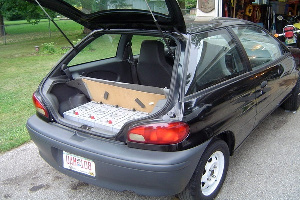Recent news items about Electric-Vehicles (EVs) being brought into Ghana is reassuring for EV enthusiasts in the country.
In the first instance, the Chief Executive Officer of Mana Mobility, a private company, has revealed plans to produce electric vehicles in Ghana.
Speaking in an interview with the Graphic Business at a media launch in Accra, Mr. Schwarzenbauer said that the cars would be developed and produced in Ghana by Ghanaian people; “We will do it here. We have been trying to develop the right concept for the market. We have experts coming in from different areas, we have the Design and Technology Institute from Accra also helping us to find the right way of doing it and the outcome has been great,” he stated.
Also, recently, the Deputy Minister of Transport, Hon. Frederick Obeng Adom, has announced that E-Vehicles would soon be introduced into the country.
Speaking on behalf of the Minister for Transport, at a regional stakeholder meeting on the national energy transition plan, at Techiman, in the Bono East region, the Deputy Minister was quoted as saying, “We are also working assiduously to introduce the first-ever battery powered electric buses as well as gas-powered buses for public transportation. These interventions would serve as important leverage that would set the tone for the gradual decarbonisation of the road transport industry”.
More people are now searching for information on EVs:
Now that petrol and diesel fuel prices are shooting up, with more price increments being forecast, many drivers are trying to find out about the overwhelming advantages and costs of EVs. For starters, pure electric vehicles are powered only by batteries, and they have the following advantages:
No petrol or diesel engines, no exhaust fumes and no noise;
No oil changes, no spark plugs, no timing belts, no transmission problems;
Brakes wear less because of ‘regenerative braking’;
Fast and smooth acceleration;
Hardly any maintenance, except to check on tyre pressures and clean or change dust filters;
Conveniently charge the vehicle at home, or in public charging stations – when these become available at more charging points, as promised earlier by the Ministry of Energy.
Electric vehicles have shorter driving ranges, usually from 200km to 600 km per full charge (depending on the size and capacity of the battery pack); however, most people drive daily well within the range of their electric cars, before recharging them at night. For now, until recharge stations are installed throughout the country, one could board busses for long trips outside the cities or regions.
Different types of Electric Vehicles:
There are three kinds of electric vehicles, namely,
The Battery Electric Vehicle (BEV) – this uses an electric motor and batteries only, without petrol or diesel engines, and must be plugged into an external source of electricity to recharge its batteries. BEVs can also recharge their batteries, when on the road, through a process known as regenerative braking; through this process, the EV’s electric motor recovers some of the energy normally lost as heat when the brakes are applied to slow down or stop the vehicle, and uses this recovered energy to partially recharge the batteries. Examples of BEVs are Tesla Model-3, Volkswagen ID.4, Peugeot e-208, etc.
The Hybrid Electric Vehicle (HEV) is predominately normal petrol or diesel car, but has a small battery pack, and will often run on the battery alone at low speeds, or during traffic jams, to save fuel; but when the car needs to go faster, the petrol or diesel engine kicks in. Examples of HEV are the Toyota Prius (models from 1997 to 2022), 2022 Citroën DS5, 2022 Peugeot 3008, 2022 Toyota Yaris Hybrid, etc.
The Plugin Hybrid Electric Vehicle (PHEV), is a type of electric vehicle that has both an internal-combustion engine (ICE) – either petrol or diesel – and a battery-powered electric motor; PHEVs can keep driving after their batteries (fewer than those inside BEVs) are fully depleted. PHEVs have ranges from about 50km to 70km, when driving on the battery pack alone; they switch to the petrol or diesel engine when the battery charge is depleted. The PHEVs occupy a middle ground between BEVs and HEVs. For some people, PHEVs are a better option for them than BEVs, since they enable a fuel-free drive most of the time, as one does not have to worry about the range – range anxiety – when one drives on the battery charge. But these cars are more complex and rather expensive, compared to BEVs. Examples of PHEVs are the 2022 Toyota RAV4 Prime, 2021 Ford Escape, 2022 Hyundai Tucson, 2022 Kia Sorento, etc.
Car assembly plants in Ghana are predominantly ICE plants:
Currently, there are five or so car assembly plants that have been established in Ghana; these are predominantly petrol or diesel engine – ICE vehicle plants. The plants include Toyota, VW, Nissan, Mahindra and Kantanka – although the Kantanka Group of Companies announced plans, in August 2020, to launch its electric vehicle, named the Kantanka Amoanimah EV, into the Ghanaian market. The major foreign car assembly plants should also be requested to make their intentions known about introducing their EVs on the Ghana market, especially, when the developed countries are banning them from continuing with their polluting ICE cars. Norway, a major oil-producing country, is set to stop ICE cars from its market by 2025; Volvo started to build only electric & hybrid vehicles from 2019. The Netherlands intends also to get rid of petrol and diesel vehicles by 2025; Germany and India have announced similar plans ahead for 2030. Also, the French government has vowed to ban all petrol and diesel vehicles by the year 2040.
A Daily Graphic Editorial of 8 April 2022 lauded Japan Motors Trading Company (JMTC), for formally beginning the assembling of the all new ‘Built of More’ Nissan Navara at its new assembly plant in Tema, near Accra; however, the editorial was mute about encouraging JMTC to include EV cars in the range of cars to be assembled here.
It is now time to start converting our small cars and Trotros into EVs:
More importantly for Ghana, we have to commence a hands-on plan to get our TVET institutions, automotive workshops, Abossey Okai, Suame magazine, and private garages to get involved in converting our many ICE cars and Trotros which have overpopulated our roads into EVs. The technology involved is not very complex – one only needs to remove the petrol or diesel engines, and any part of the vehicle that are connected or needed for the combustion in the petrol and diesel engines (e.g. the fuel tank and fuel lines and filter, starter motors, the exhaust pipe and catalytic converter, the radiator and coolant, fan belts, etc.). One can then buy or import Do-It-Yourself (DIY) electric vehicle kits – most of them have been designed to fit or be adapted into the variety of cars and Trotros that we find on our roads.
The DIY kits can be selected, bearing in mind (i) the appropriate electric motor for the size and weight of the vehicle, (ii) the number of batteries (which determines the range or how far the vehicle can drive after charging the battery pack – these can be assembled locally or imported), (iii) the controller – this is an electronic box that controls the power (speed) between the batteries and the motor; it is linked to an on-board computer, which is the brain of the electric vehicle. Note that the higher the current rating of the controller, the quicker the acceleration will be; also the higher the voltage of the battery pack, the faster the top speed and efficiency of the car, and (iv) the Battery Management System (BMS) and the dashboard display.
The BMS ensures the efficient usage of the battery cells and prolongation of their lifetime; it communicates the voltage of the batteries and temperature to the control box and ensures that the vehicle is operated within safe limits.
There are companies that specialize in electric vehicle conversion kits for cars and buses: e.g. DIYev (diyev.com) is the top innovator for the electric vehicle industry that has now decided to offer all of its technology directly to the public. DIYev engineers have developed a new kind of all-electric drivetrain and battery module system for small, medium and large trucks and buses that are very easy to use, install, maintain and understand.
General Motors has also started to sell electric drive kits for hobbyists, which will enable them to convert their conventional cars into electric cars. Conversion kits from several Chinese companies are available for order; China has the most electric vehicles, with over 1000 small and large electric vehicle manufacturers – they produce over one million EV cars of various models every year.
Top Chinese electric vehicle manufacturers include BYD (Build Your Dreams) – this company has brought engineers from Ferrari and other leaders in the performance vehicle industry in the company, and has partnered with renowned investors such as Samsung, Daimler and the renowned American investor, Warren Buffet and his Berkshire Hathaway Group; there are also SAIC Motors, which is Shanghai-based, Dongfeng Motor Corporation (DFM), which is headquartered in Wuhan in Southern China, etc.
Import rebates and tax exemptions for EV cars and their spare parts would thus encourage the use of EVs in the country. Also, by involving our institutions, technicians, mechanics, workshops and do-it-yourself enthusiasts in the conversion programme, we shall be laying the foundation for our people to get up to speed in the latest technologies in the electric cars industry.
Source: Laala Kofi, Contributor
 Home Of Ghana News Ghana News, Entertainment And More
Home Of Ghana News Ghana News, Entertainment And More





